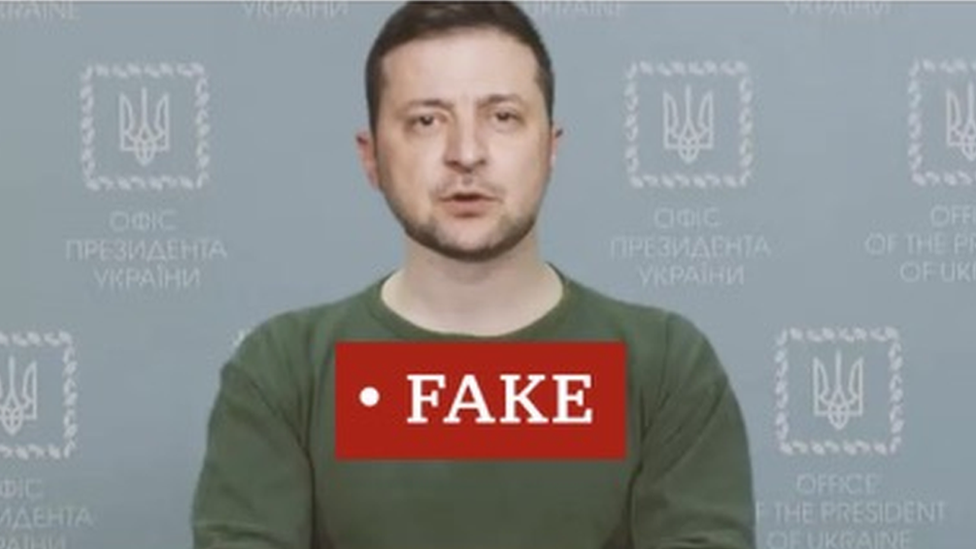Fake Trump arrest photos: How to spot an AI-generated image
- Published
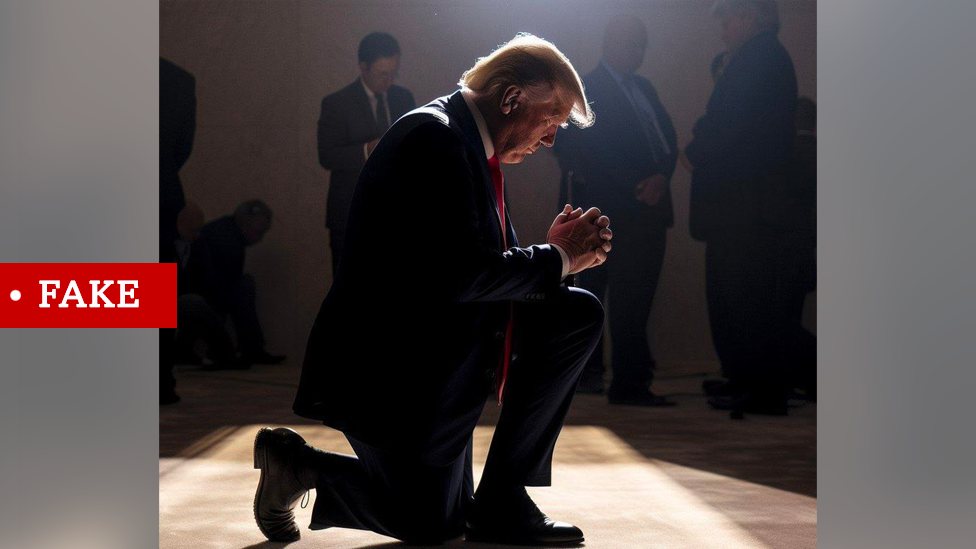
Former US President Trump posted this AI-generated image of himself, but a closer look shows he is missing fingers
Fake images created by artificial intelligence (AI) tools depicting Donald Trump have appeared on social media over the past week.
Many falsely showed the arrest of the former president, who may face indictment over payment of hush money to a woman he allegedly had an affair with. He has not yet been charged with a crime.
Many of those sharing the images pointed out they were fake, and they did not appear to fool lots of people - but a few did seem to be tricked.
On Thursday, Mr Trump also shared an AI-generated image on his own social media platform Truth Social. It showed him kneeling in prayer.
What are some of the tell-tale signs of AI-generated imagery? And how can you distinguish a real from a fake?
Does something look 'off'?
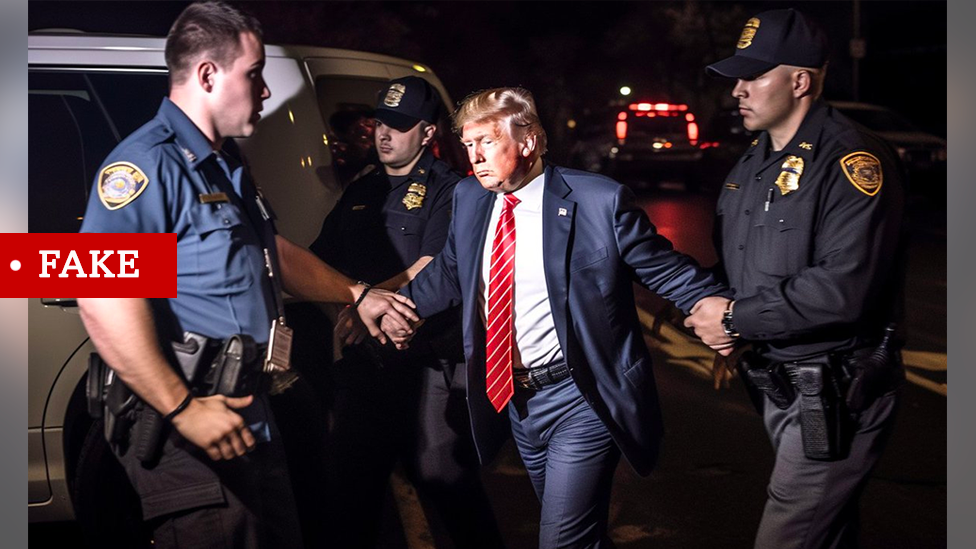
This image looks realistic, but take a closer look at Trump's right arm and neck
The images circulating online, like the one above, look hyper-real - more like staged artistic shots than in-the-moment photographs.
A closer look shows some obvious giveaways that something isn't quite right.
Look at the centre of the image. Mr Trump's arm is much too short, and the police officer on the left is grabbing something that more resembles a claw than a human hand.
Similarly, if you focus on Mr Trump's neck, you'll notice that his head looks as if it's been superimposed on the image.
Henry Ajder, an AI expert and presenter of the BBC radio series The Future Will be Synthesised, says current technology is not very good at depicting certain body parts, especially hands.
"If you zoom in on the images you can often see inconsistencies such as the number of fingers," he says.
What are other people saying?
A simple check of a few news sites is a sure-fire way to verify that Mr Trump hasn't been arrested or even indicted - at least, not yet.
If and when Mr Trump does face charges, his arrest will make headline news all around the world. And you can imagine the media flurry if the former president were to somehow flee from police.
Another good idea is to think about the context in which an image is being shared. Who's sharing it - and what are their motives?
Often people share pictures to amplify their broader political views, even if they haven't checked whether the photos are authentic, Mr Ajder says.
"We've seen really crude examples of other fakes such as the recording of Nancy Pelosi being slowed down to make her sound drunk," he adds. "That was a super crude piece of manipulation and yet many people were fooled by it - or at least wanted to believe it."
More weird details

What's blurry here? Look at the faces in the crowd
A closer look at the photos themselves reveals more dubious details.
Unnatural skin tones and faces with waxy or blurred-out features are strong indications that the image is fake.
In the picture above, a person with a blurry face is clearly visible on the centre-right. And Mr Trump's hair appears blurry, while his face is in focus.
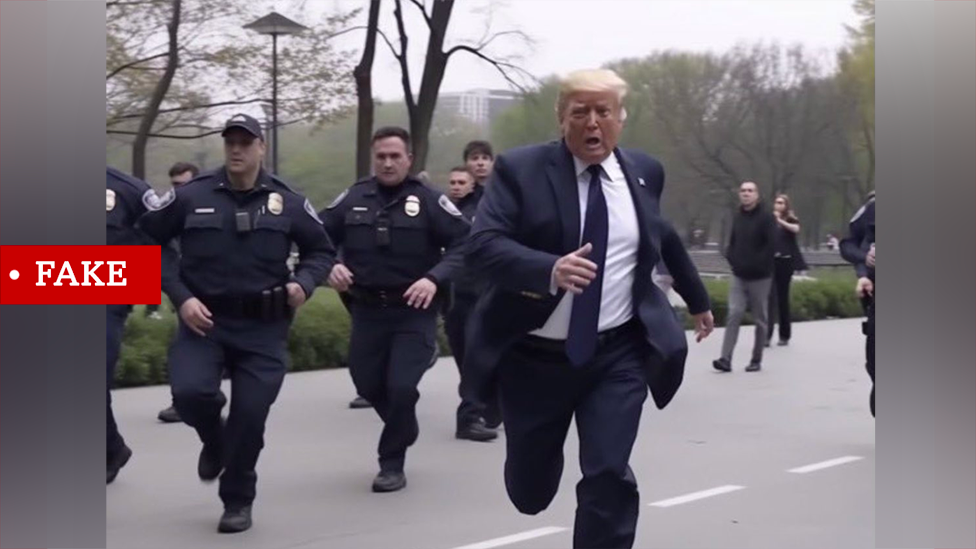
Are those police really chasing Trump or are they looking at something else?
AI technology has also not yet mastered accurate depictions of eyes.
In the image above, officers appear to be chasing Mr Trump - but they're looking in a totally different direction.
Trouble ahead?
AI experts told the BBC that while faked imagery is "nothing new", the speed of progress within the field, and potential for misuse, is something to be concerned about.
"Synthetic content is evolving at a rapid rate and the gap between authentic and fake content is becoming more difficult to decipher," says Mounir Ibrahim of Truepic, a digital content analysis company.
The experts agree that Mr Trump's fame makes the fakes easy to spot. But images of unknown people could make the task more difficult - and the technology is getting better all the time.
Deepfake technology: Can you spot what's real?
- Published28 July 2022
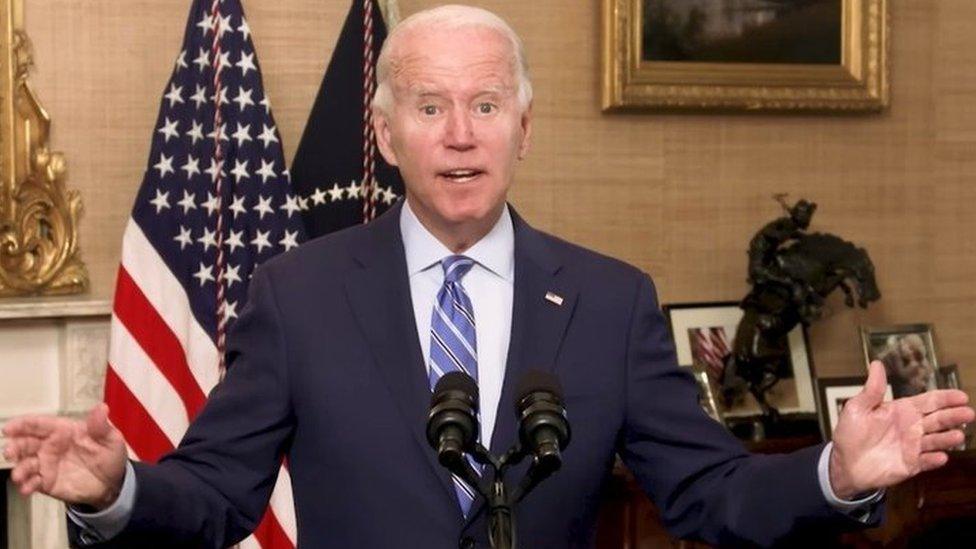
- Published18 March 2022
